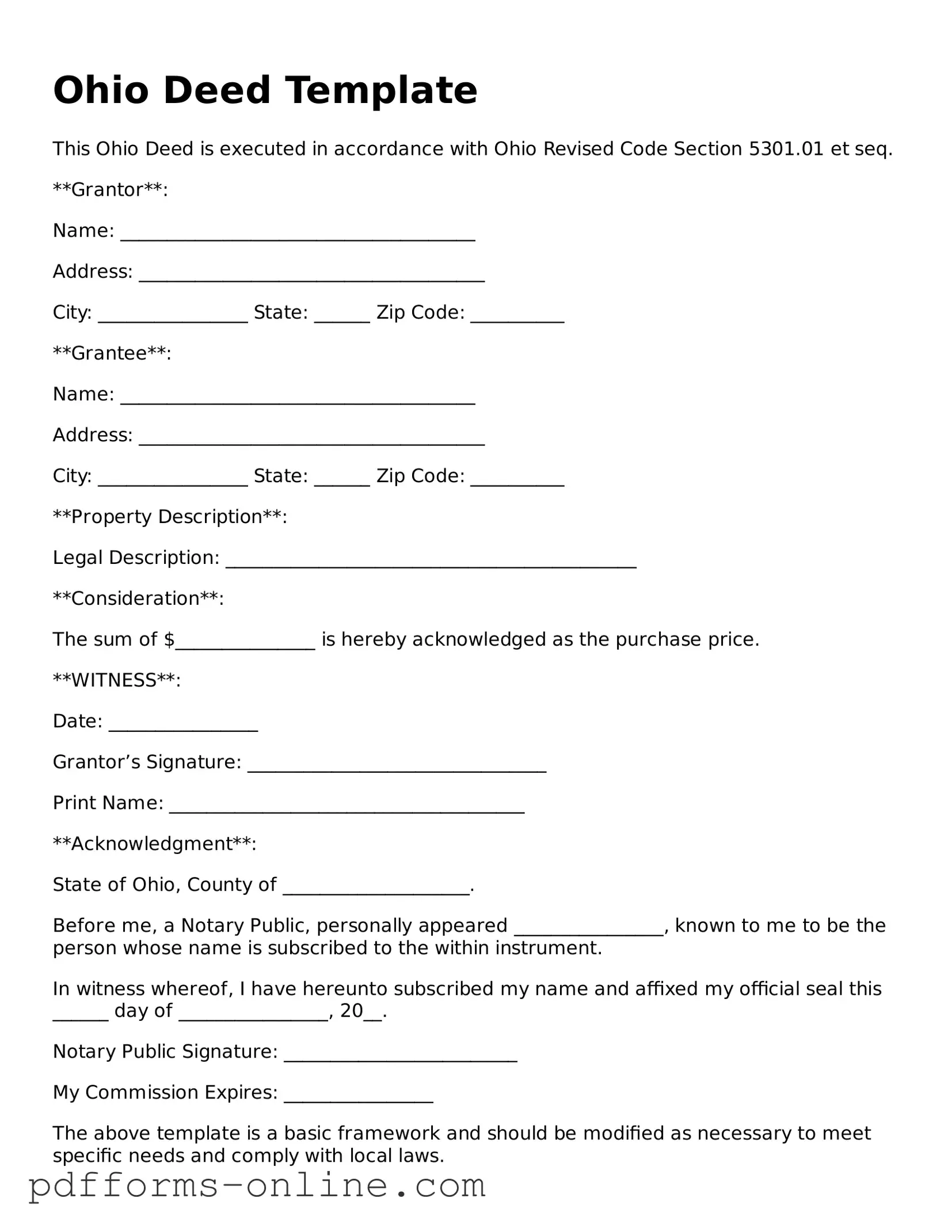Ohio Deed Template
This Ohio Deed is executed in accordance with Ohio Revised Code Section 5301.01 et seq.
**Grantor**:
Name: ______________________________________
Address: _____________________________________
City: ________________ State: ______ Zip Code: __________
**Grantee**:
Name: ______________________________________
Address: _____________________________________
City: ________________ State: ______ Zip Code: __________
**Property Description**:
Legal Description: ____________________________________________
**Consideration**:
The sum of $_______________ is hereby acknowledged as the purchase price.
**WITNESS**:
Date: ________________
Grantor’s Signature: ________________________________
Print Name: ______________________________________
**Acknowledgment**:
State of Ohio, County of ____________________.
Before me, a Notary Public, personally appeared ________________, known to me to be the person whose name is subscribed to the within instrument.
In witness whereof, I have hereunto subscribed my name and affixed my official seal this ______ day of ________________, 20__.
Notary Public Signature: _________________________
My Commission Expires: ________________
The above template is a basic framework and should be modified as necessary to meet specific needs and comply with local laws.
